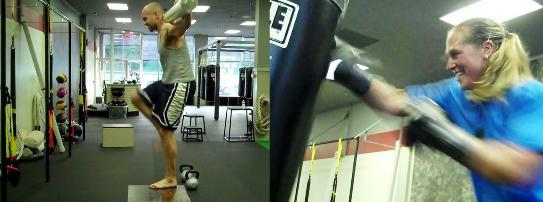Outcome Based Decision Making
by Rugged Coaches on 04/02/15
Contributed By: Coach Tommy
How do I achieve my goals? When I speak to trainers, clients, and anyone who gets stuck in a conversation with me, this question always comes up. We get started on general topics and then eventually it turns to, "well, what are you trying to accomplish?". This is when I turn back to science class and go off on a tangent about the scientific method and outcome based decision making.
Most people already know for the most part what to do to get them to where they want to be. The problem is they never even attempt it because it seems too daunting or they expect something that worked for someone else will have the same exact effect for them. They may start with the perfect plan and execute it flawlessly, but what they choose to measure their success with falls short. Without proper feedback, we rarely continue behaviors even if they are successful.
Here’s an example:
Subject X wants to lose weight and uses the scale as his/her only tool for feedback. After three weeks the scale is only down by 2lbs. Clothes feel different and he/she is stronger than before. But because the scale hasn't dropped, subject X feels unsuccessful.
Should they have waited three weeks to measure? Should their weight be the only metric to look at for feedback?
So Subject X starts on a journey of a new fitness routine and decides after two weeks that it is not working. Based off what the new plan promoted, X is not convinced that it is going to be successful and decides to quit. The plan prescribed a minimum of six weeks. It also came with a meal plan that was recommended to supplement the training protocol.
How did they know it wasn't working? Maybe it takes the full six weeks for the body to adjust to the stimulus and show gains.
Rather than look at it and try to adjust for the variables that might be holding X back, X chooses to stop altogether. Even if he/she continued for the next six weeks and saw little or no change, that still gives us information on what works and doesn't work. By quitting earlier, one cannot draw a conclusion as to the effectiveness of the program because it was not completed. Moreover, they lost valuable information about what works (or doesn't work) specifically for themselves.
This is a sad reality for a lot training programs. People base their critiques off poorly designed experiments that don't actually acquire enough information to make an educated guess about the efficacy of the program.
Here is where being scientific about your goals becomes crucial. Set up an experiment. State what you think should happen. Decide how you are going to measure it. Give it a timeline. Define the independent variables you will be looking at and what will be the controls.
Example:
I want to gain 5lbs of muscle in four weeks.
I will attempt this by training 4x a week(independent variable) and not changing my diet(control).
I will measure success by my weight every three days, girth measurements each week on Sunday and Bodyfat % every two weeks.
What this allows us to do is monitor what is happening with some idea of why. Most people jump into a healthy lifestyle by changing diet, exercise and lifestyle all at once. What they then find is they were successful, but they’re not sure why. Maybe they didn't have to go through all that trouble if they had just focused on one aspect which could have the greatest effect.
The other benefit that comes from this approach is being able to make changes without starting all over. If after two weeks you find that there is no significant change in the direction you want; you adjust. If 4x a week isn't cutting it, try 5x and see what happens. The idea is to try something that will make you successful. Adding in large amounts of variables all at once leads to low adherence numbers.
Research has shown that when people try to change a single behavior at a time, the likelihood that they’ll retain that habit for a year or more is better than 80%. When they try two behaviors, their chances of success are less than 35%. When they try three behaviors or more, their success rate plummets to less than 5%(precision nutrition)
So set yourself up for success and follow a smart plan instead of a crazy all or none approach.
Here at Rugged fitness this is how we approach both our personal and group training. We test and measure the variables with our programming and client feedback.
Here are 5 easy steps
1. Decide on your objectives and what outcome you’re looking for. (For example, I wants to get leaner.)
2. Decide what evidence will show you what you want to know. (Change in my body composition.)
3. Gather the evidence. ( photos and skin fold measurements.)
4. Review and interpret the evidence. (I am is shrinking.)
5. Based on evidence, decide on next steps. (Keep doing what you’re doing. Yeah!)




